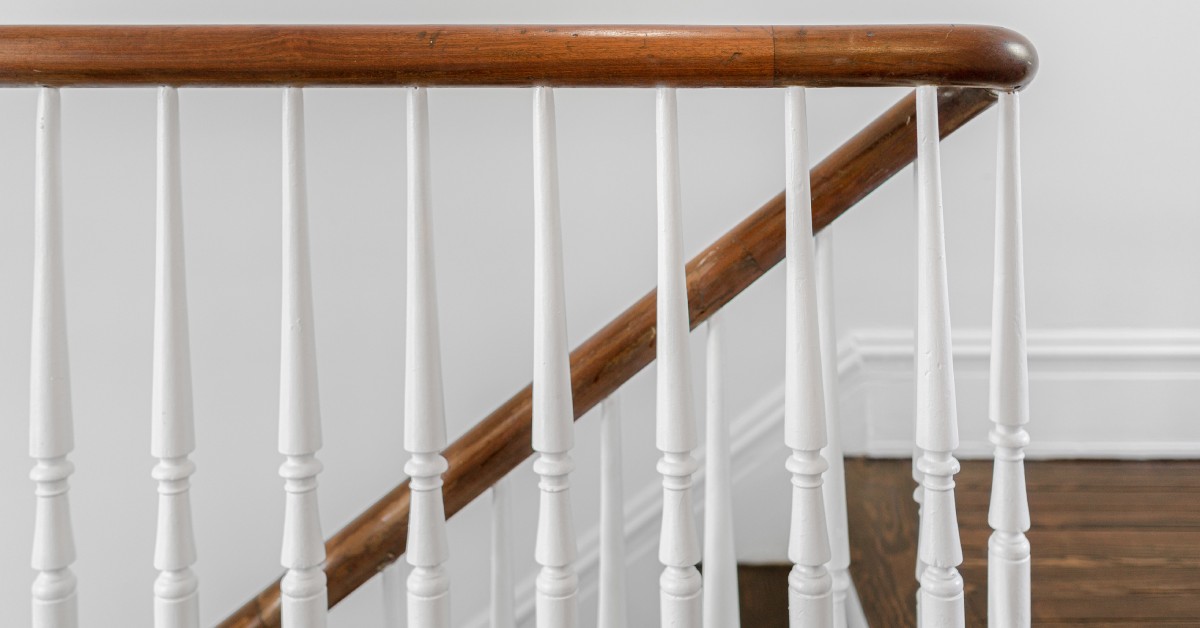Choosing the perfect finish for your wooden stair railings can significantly impact the overall aesthetics in your home. The decision between painting or staining your railings goes beyond appearance—it also involves considerations of maintenance, durability, and harmony with your home decor. Continue reading to discover whether painted or stained wooden stair railings are better.
Pros and Cons of Painted Railings
Painted railings offer a broad spectrum of color choices, allowing you to either blend your railings seamlessly with your existing decor or create a bold, contrasting feature. The versatility of paint means you can easily match the railings to your walls, trim, or furniture, providing a cohesive look throughout your home.
However, painted railings come with their own set of challenges. Maintenance is often more demanding, as paint can chip, peel, or fade over time, especially in high-traffic areas. You may need to perform regular touch-ups to maintain a pristine appearance. Additionally, humidity and temperature fluctuations can compromise the durability of painted finishes, which can cause the wood to expand and contract, leading to cracks in the paint.
Pros and Cons of Stained Railings
Stained railings highlight the natural beauty of the wood, enhancing its grain and giving each piece a unique character. This option is ideal if you appreciate the organic, warm feel that wood imparts. Stains come in various shades, from light to dark, allowing you to choose a tone that complements your interior design while showcasing the wood’s inherent qualities.
On the downside, the application process for stain can be more complex than paint, often requiring multiple coats and precise timing to achieve an even finish. Different types of stains, such as oil-based or water-based, offer varying levels of durability and maintenance needs. Oil-based stains typically provide deeper penetration and long-lasting protection but may require more effort to apply and clean up. Water-based stains are easier to work with and clean but may not offer the same level of durability. Maintenance for stained railings generally involves periodic reapplication to keep the wood protected and looking its best.
Important Factors To Consider
When deciding whether painted or stained wooden stair railings are better, several factors should be taken into account. Personal preference plays a significant role—consider whether you prefer the solid, uniform look of paint or the natural, textured appeal of stain. Home decor is another important aspect, as your choice should harmonize with the overall style and color scheme of your interior.
Maintenance is also a practical consideration. If you’re willing to invest time in regular upkeep, painted railings might work for you. However, if you prefer a more low-maintenance option, stained railings could be a better fit. Lastly, budget can influence your decision, as the cost of materials and labor can vary between painting and staining projects.
Enhancing Your Home’s Beauty
Both painted and stained wooden stair railings offer distinct advantages and challenges. Ultimately, the best choice depends on your personal style, home decor, maintenance preferences, and budget. Consider these factors carefully to select the finish that will best enhance your home’s beauty and functionality.
Ready to transform your stair railings? Explore Mr. Spindle’s outdoor wood stair railing options to find the perfect match for your home today.


